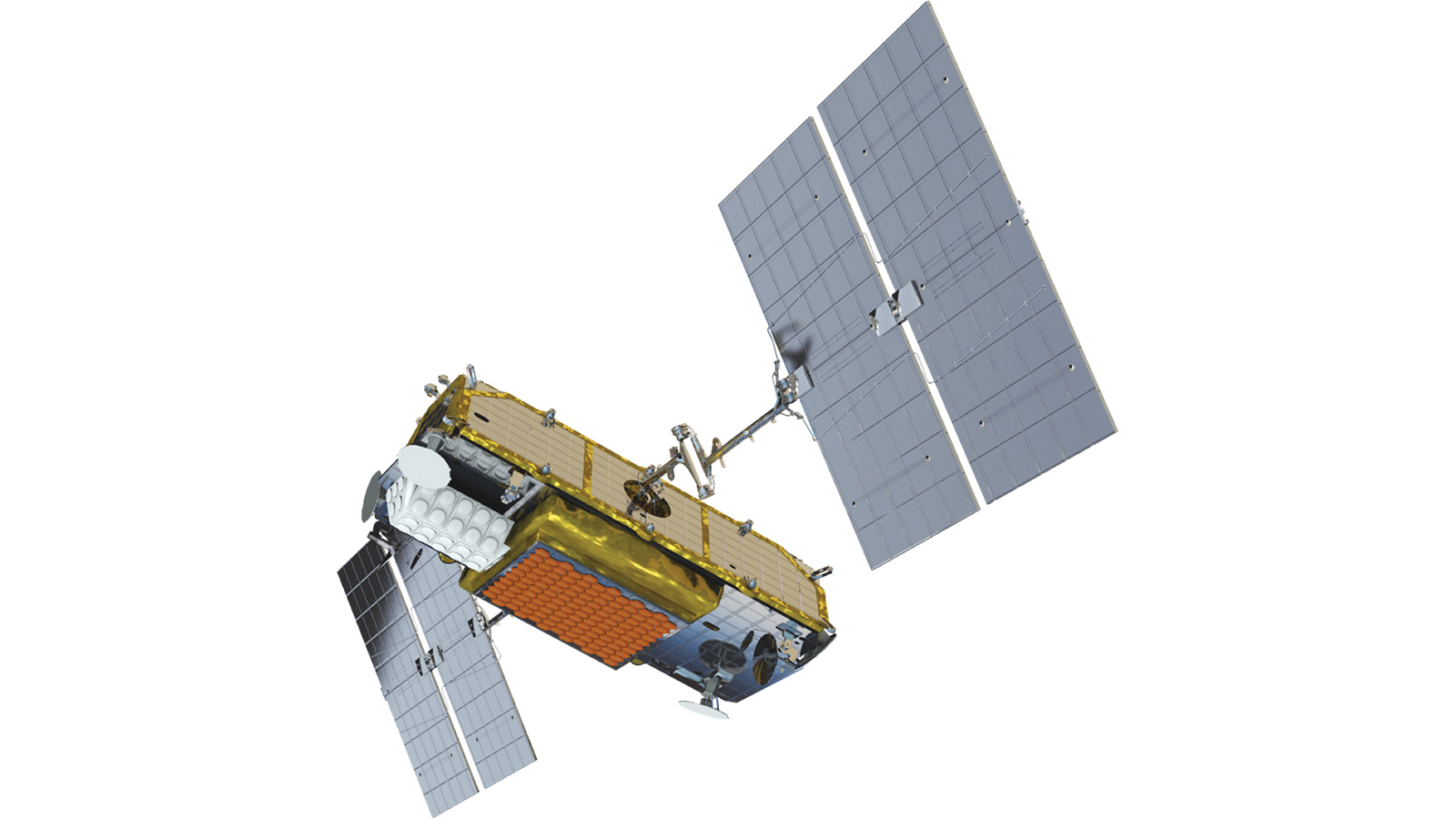Stay Up to Date
Submit your email address to receive the latest industry and Aerospace America news.
If Iridium’s final tranche of next generation satellites reaches orbit as planned on Jan. 8, the launch will clear the way for its aviation partner, Aireon LLC, to begin an aircraft tracking demonstration over the North Atlantic Ocean.
The Falcon 9 launch from Vandenberg Air Force Base, California, is planned for 10:48 Eastern time.
With 1,500 daily flights, the North Atlantic is the world’s busiest oceanic air corridor. Since most flights are out of range of ground-based radar, air traffic controllers must separate planes far apart and direct them along carefully orchestrated routes.
“They are flying at best 30 miles and most likely 80 to 100 miles apart,” Don Thoma, Aireon’s chief executive, told reporters during a Jan. 3 briefing. “They get in a conga line and they can’t climb, they can’t maneuver around turbulence because the controllers can’t see them.”
Aireon aims to change that with the ADS-B (Automatic Dependent Surveillance-Broadcast) receivers installed on each satellite of the 75 satellites in the $3 billion Iridium NEXT constellation, which includes nine in-orbit spares. The receivers will detect the ADS-B Out identity and GPS-location broadcasts transmitted by aircraft ahead of an FAA mandate that goes into effect next January. By receiving ADS-B data even from aircraft that are far from land, air traffic controllers will be able to make routes shorter and more direct, allow faster planes to fly around slower ones and help airlines save fuel, Matt Desch, Iridium’s chief executive, told reporters.
Aireon, a joint venture of Iridium and the air navigation service providers of Canada, the United Kingdom, Italy, Denmark and Ireland, announced plans to track aircraft globally in 2011. Since then, the air navigation service providers directing traffic across the North Atlantic have been drafting plans for operational trials.
Once the final tranche of 10 Iridium satellites reaches orbit, Aireon will conduct its own tests to confirm that the receivers on the satellites work as designed. Then, Aireon will continue to carry out aircraft tracking tests with customers through late March. If that schedule holds, National Air Traffic Services of the United Kingdom and Nav Canada will invite major carriers to join operational trials beginning in April over the North Atlantic.
“Air navigation service providers will work with the airlines, dispatchers, pilots and controllers to enable this capability and fundamentally change the way they’ll operate in the North Atlantic,” Thoma said.
As of Jan. 4, Iridium has launched 65 Iridium NEXT satellites on seven SpaceX Falcon 9 rockets, notably without any failures. The schedule was more drawn out than expected, though. Iridium originally hoped to complete the constellation in 2017. With its new satellites, Iridium also is rolling out Certus, a global satellite broadband service to transmit voice and data to phones and mobile devices on land, ships and aircraft.
Once the Iridium constellation is completed, Aireon and FlightAware, an aviation software and flight tracking firm based in Houston, plan to offer worldwide coverage through GlobalBeacon, a service that tracks aircraft minute by minute. By Jan. 1, 2021, aircraft operators must show they can report the positions of aircraft in distress at least once per minute to comply with the International Civil Aviation Organization’s Global Aeronautical Distress Safety System created after the disappearance of Malaysian Airlines Flight 370.
About Debra Werner
A longtime contributor to Aerospace America, Debra is also a correspondent for Space News on the West Coast of the United States.
Related Posts
Stay Up to Date
Submit your email address to receive the latest industry and Aerospace America news.




